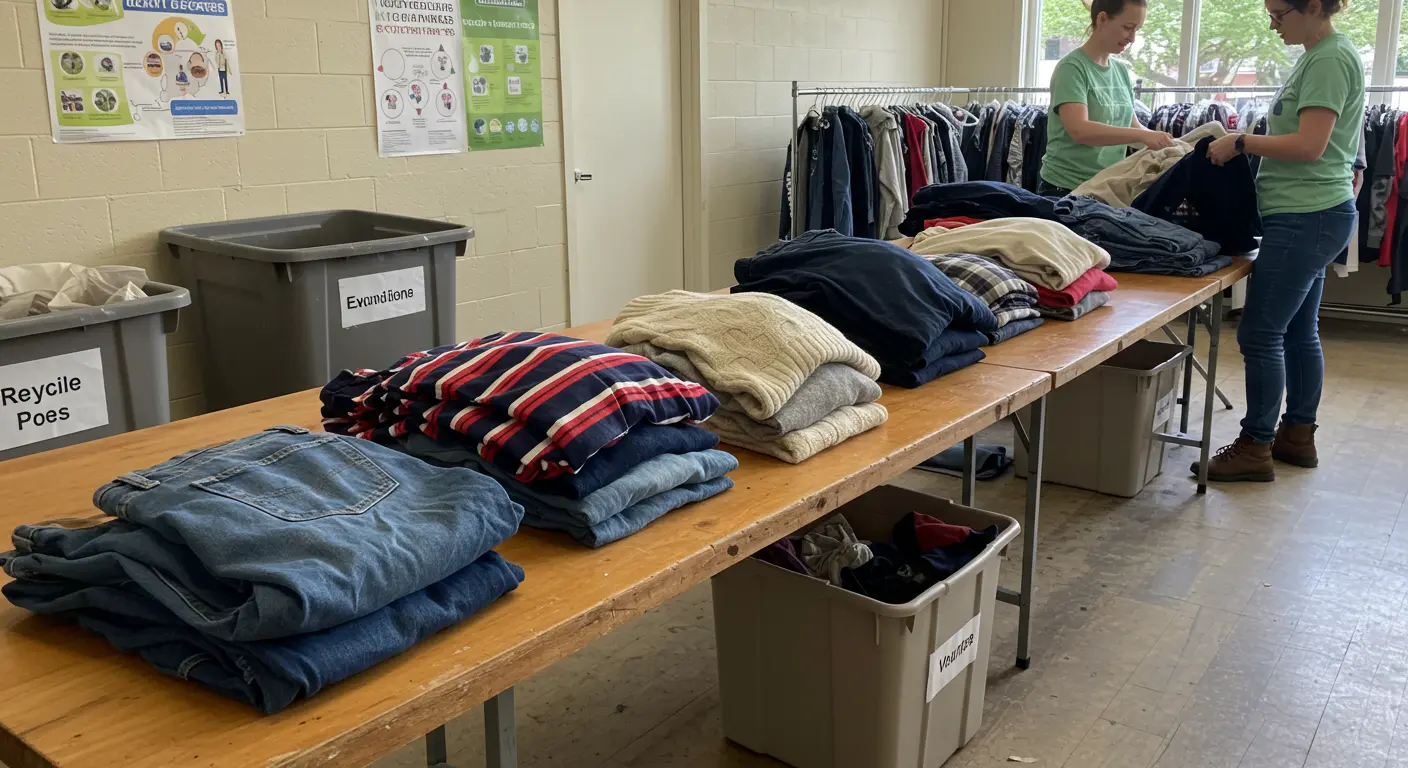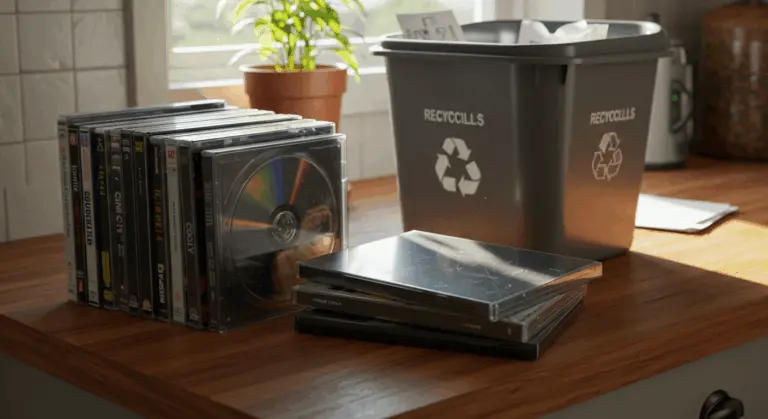Understanding Textile Recycling – What It Is
Textile recycling transforms pre-consumer and post-consumer textile waste into valuable resources for new products. Rather than sending textiles to landfills, this sustainable practice conserves resources while significantly reducing waste.
Pre-consumer waste encompasses fabric scraps, manufacturing cuttings, and unsold merchandise—materials that never reach consumers. Post-consumer waste includes all discarded textiles—clothing, linens, and accessories that have outlived their original purpose.
Through mechanical and chemical processes, recycling transforms these materials by breaking them down into reusable fibers. These reclaimed resources become the foundation for new garments, home textiles, industrial materials, insulation, and automotive components. The process supports a circular economy, extending fabric lifecycles while reducing the textile industry’s environmental impact.
How to Recycle Clothes – Practical Steps
Recycling unwanted clothes is surprisingly straightforward. Several pathways can divert your garments from landfills, depending on their condition:
-
Donation: Quality garments find new life through donations to thrift stores, consignment shops, or charities.
-
Retailer Take-Back Programs: Major retailers like H&M, Zara, and The North Face maintain in-store collection bins that accept any textiles—regardless of brand or condition.
-
Local Recycling Centers: Municipal waste management often provides textile drop-off centers, with some communities offering convenient curbside collection.
-
Mail-In Services: Companies like Terra Cycle and For Days offer mail-in programs, often with prepaid shipping, for convenient recycling from home.
Proper preparation maximizes recycling efficiency. Sort items by material type when possible—cotton separate from polyester. Remove non-fabric elements like buttons and zippers if the program requires it. Most importantly, ensure all items are clean and completely dry.
Challenges in Textile Recycling – What to Know
Textile recycling faces significant obstacles that limit its effectiveness. The complex composition of modern garments presents the primary challenge—blended materials like cotton-polyester mixes resist separation with current technology available to most facilities.
Physical components create additional barriers. Zippers, buttons, tags, and hardware require manual removal before processing begins. This labor-intensive disassembly drives up costs and undermines economic viability.
Sorting presents its own set of complications. Without standardized labeling, recyclers must guess fabric composition or invest in expensive testing equipment for accurate identification. Color sorting adds another layer—mixing different hues produces dull gray fibers that demand additional processing or re-dyeing to become marketable.
Quality degradation presents the most significant challenge. Each processing cycle shortens and weakens fibers progressively. This deterioration means recycled textiles rarely stand alone in new products—they require blending with virgin materials to meet performance standards.
Infrastructure gaps worsen these challenges. While textile collection systems expand, processing capacity lags behind. Many regions lack facilities capable of handling textile waste at scale, forcing collected materials into export, down cycling, or—ironically—landfills despite consumers’ good intentions.
The Environmental Impact of Textile Waste
The fashion industry has an environmental impact that often escapes notice. As the world’s second-largest water consumer, textile production strains already pressured water resources. This consumption spans the entire manufacturing chain—from cultivating cotton to dyeing and finishing fabrics—creating substantial ecological burden before garments reach store shelves.
Fast fashion has accelerated this environmental crisis. Built on rapidly shifting trends and rock-bottom prices, this business model cultivates a throwaway culture around clothing. The statistics are staggering: 50% of fast fashion purchases are discarded within twelve months.
The numbers are striking. Textile waste has surged 811% since 1960, ranking among the fastest-growing waste categories. As these materials decompose in landfills, they release methane—a greenhouse gas far more potent than carbon dioxide. Meanwhile, synthetic fibers shed microplastics that infiltrate water systems and ultimately contaminate our food chain.
Positive change can come from simple behavioral shifts. Extending a garment’s active use by just nine months can reduce its carbon, water, and waste footprints by 20-30%. This single adjustment demonstrates how individual choices can collectively drive meaningful environmental progress.
Clothing Donation Programs – A Sustainable Option
Clothing donation programs offer one of the most accessible pathways to textile sustainability. These initiatives give new purpose to garments destined for landfills, extending their usefulness while reducing environmental impact. Quality donated clothes find second lives through thrift stores, charity shops, and secondhand marketplaces—providing affordable options while funding community services.
Donation’s sustainability benefits extend far beyond landfill diversion. Items unsuitable for resale often discover new purposes through recycling channels, transforming into industrial cleaning cloths, furniture padding, and insulation. This repurposing shows the circular economy at work—materials retaining value across multiple lifecycles.
Major donation networks operate through diverse channels: national organizations like Goodwill and Salvation Army, grassroots community initiatives, and retail take-back programs. Many retailers now maintain collection points accepting unwanted clothing regardless of brand or condition. Some programs sweeten participation with discount vouchers, making donation both convenient and rewarding.
Smart preparation improves donation effectiveness. Sort items by condition—separating clean, undamaged pieces from heavily worn ones. This pre-sorting helps organizations efficiently channel textiles toward appropriate destinations: resale, international aid, or recycling.
Future of Textile Recycling – Innovations and Trends
Textile recycling is experiencing a revolutionary transformation, driven by technological breakthroughs and ambitious sustainability mandates. At the forefront of this change is the European Union’s Strategy for Sustainable and Circular Textiles, which sets concrete targets: by 2030, all EU-marketed textiles must be durable, recyclable, and increasingly composed of recycled fibers.
Companies like Renew cell show the scale of innovation in this field. Their ambitious vision? Recycling the equivalent of 1.4 billion T-shirts annually by 2030, scaling operations to process 360,000 tonnes. But that’s just the beginning.
Chemical recycling technologies are becoming transformative for the industry, addressing challenges that seemed impossible to solve. Unlike mechanical recycling, which degrades fiber quality, chemical processes break down textiles at the molecular level. The result? Materials rivaling virgin fibers in quality and performance.
Several key trends will shape textile recycling’s future as these innovations develop and expand:




